1. Summary
1.1. Daytime engineering
- Both SCExAO and HiCIAO were placed on 3mm thick rubber to limit vibrations
- SCExAO alignment was completed in a day at the summit. This is a major improvement compared to previous runs: the new alignment procedure is robust, and will further be improved by mechanical improvements. Inverse PIAA alignment was improved compared to previous run.
- SCExAO visible imaging computer crashed during daytime engineering. SCExAO team worked about 1 full day on this without success, and Vincent then took the computer down for repair. Many thanks to Uchida-san for helping with this on a very short notice, and working long hours to bring back the computed in a working state. The cause of the failure is not certain yet, but could be SAS card or hard drive cable. Computer was recovered, but this failure cost SCExAO team a lot of time, and compressed daytime test schedule.
- One PZT actuator failed on the DM TT mount during daytime engineering. It was replaced the day after we identified the failure (time lost ~ 3hr). No other hardware failure.
1.2. Nighttime engineering
- Weather / conditions: The weather was clear all night, low humidity (below 5%). Seeing around 0.7" in V. (This is the first time SCExAO observes in such favorable weather !!)
- All SCExAO hardware worked well without any downtime due to failure
- Serious image quality problem were encountered. The SR was about 5% on bright stars (Vega, Mira) as seen by SCExAO internal camera. Several hours were spent trying to troubleshoot this issue, with no clear conclusion. AO team is still working with SCExAO to identify the problem. Some elements are:
- This image quality issue was not present on previous run - this is a new problem
- The image showed poor quality in SCExAO IR camera, HiCIAO and also EMCCD, so the problem occurs in AO or early on in SCExAO
- The image quality seems to have slightly improved toward the end of the night
- The image quality problem was present with AO internal source and no turbulence
- The image quality problem was not present with SCExAO internal source
- Automatic SCExAO alignment loop was slow to converge due to the fact that SCExAO M1 was not gimballed (beam not centered on M1). In the future, we need to make sure this beam is centered on M1 to speed up SCExAO acquisition.
- LOWFS loop was closed on both axis
- PIAA and inverse PIAA worked as expected - performance limited by image quality problem
- Pyramid WFS open loop data acquisition worked most of the night. The star was centered on the pyramid tip by issuing commands to the visible channel tip-tilt actuators. The alignment on the pyramid tip was stable through the night, requiring no re-adjustment after the beginning of the night. We are not sure what is the acquisition speed - the images seem to be acquired very quickly (~kHz) and then buffered before they are delivered to the hard drive at slower speed (100 Hz). We will investigate this issue with camera vendor and through more "relaxed" look at the code.
- Vibration still present, but smaller than previously
- Visible light EMCCD imaging worked well, and was run in 2 colors simultaneously using the 2 EMCCD cameras
- Speckle modulation was performed, but no attempt to actively cancel speckles in closed loop was done. This will be the main focus of our efforts before SCExAO's last phase 1 engineering night. Image quality issue will need to be solved prior to this. The speckle modulation was done in two separate modes:
- Fast mode, random modulation: Random actuators are pushed on the DM, changing the DM shape every 20sec, while the SCExAO nearIR camera is acquiring images at ~70 Hz. Every image and every DM voltage map is saved to disk with an accurate timestamp.
- Slow mode, single speckle modulation: We selected a position in the PSF halo where the HiCIAO long exposure image shows a faint speckle. The DM is then driven to create a speckle of similar brightness at this position, and the phase of this speckle is changed every minute or so. This test was done for about 45mn, scanning the speckle phase several time. We hope to measure the speckle complex amplitude with this test, even if the speckle is fainter than the atmospheric halo
2. 2011-09-11 night: Detailed Timeline
ALL TIMES LOCAL HAWAII STANDARD TIME
Until 20:40
SCExAO final setup and adjustments
- release locking rings on HiCIAO and SCExAO
- center SCExAO MEMS DM on beam
Minor problems/issues:
- automatic refocusing of SCExAO not working properly -> moving to "manual" mode (drive one axis at a time)
- One of the 2 EMCCDs has straylight. Garrel and Guyon working in dome to identify source of straylight. Source identified as optical limit switch in one of the filter wheels. Problem is fixed by masking the area with a small piece of black foam
20:40
Final SCExAO adjustments completed - All SCExAO hardware working
-> AO setup, acquisition and loop optimization begins
21:17
Light in SCExAO
Acquiring Pyramid WFS data
21:20
AO reports 0.6" in R band
21:26
continuing setup: measuring offets to move source to SCExAO hotspot
Measuring pupil rotation
21:36
Focusing SCExAO on Vega
Note: Vega saturates EMCCDs in narrow band 10nm wide filter at 35Hz
Acquiring and saving pyr WFS data with 1ms exposure time
21:40
Starting SCExAO focusing
(process is longer than usual due to software issue)
Focusing is noisy at the ~100m collimation distance level (for beam after L3)
22:10
PSF as seen by SCExAO is diffraction limited but seems to have bright halo
-> moving to HiCIAO
taking pupil image: saturated
taking focal plane image: same PSF halo problem
22:30
Testing with SCExAO internal source -> same PSF halo problem
22:35
Moving to AO cal source
-> same problem with cal source
AO team investigating ...
Several things were tried through the night to help with image quality with little or no success, including:
- changing DM flat
- rotating the pupil so that a spider masks a bright spot in the pupil
problem is maybe on DM ??
23:42 ---- GIVING UP ON IMAGE QUALITY PROBLEM -> MOVING ON WITH OBSERVATION PLAN
Moving to HIP101769 (current separation = 0.2375", mV=4.11/5.2)
00:20 -> acquiring vis EMCCD data, measuring plate scale
00:20 -> acquiring and saving pyr WFS data
00:30
Calibration for LOWFS looks OK
Closing LOWFS loop @ 00:50
00:55 Telescope elevation drive stops
01:10 Back on HIP101769
Closed LOWFS loop
Good at 1%, Marginally Stable at gain = 2%, not stable at gain = 5%
01:50 Moving to AO cal to investigate image quality issue
Changing "Flat" ???
Image looks different, a little better, but still not very good.
2:40 refocusing SCExAO
3:06 Moving to Mira
3:20 starting data acqu on Mira: Pyramid, EMCCDs
LOWFS test -> loop closed until gain = 10%, stable up to ~5%
Speckle modulation tests
3. On-sky data
3.1 Sample non-coronagraphic images, movies, showing image quality issue
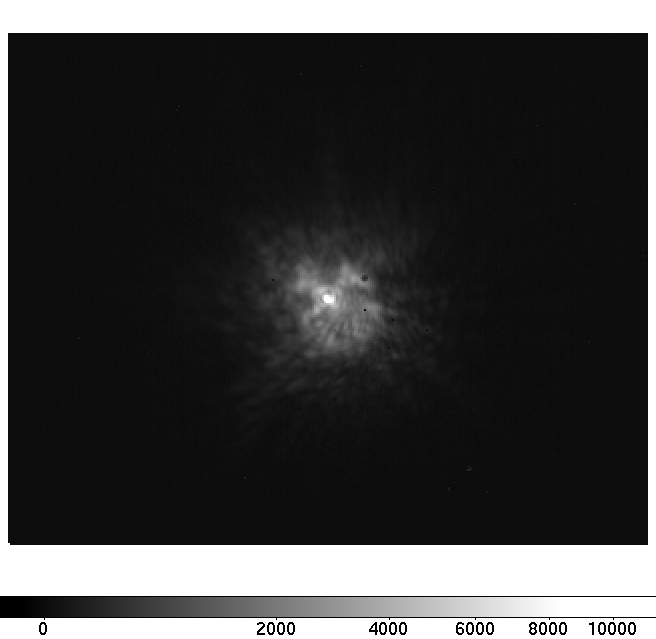 |
Figure 1: Sample on-sky PSF measured by SCExAO internal IR camera. FITS file
|
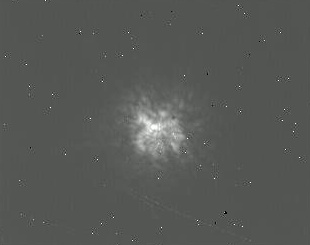 |
Figure 2: Vega movie, 1000 frames total, acquired at 70 Hz (SCExAO internal IR camera).
|
3.2. PIAA coronagraph demonstration on double star HIP101769
Separation between components is 0.24", contrast is 1 magnitude.
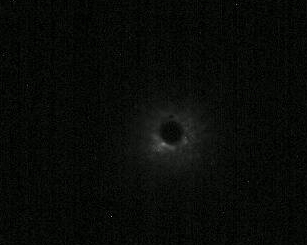 |
Figure 3a: HIP101769 movie, 1000 frames total, acquired at 70 Hz (SCExAO internal IR camera).
- First 1/2 of the movie: Lyot type coronagraph - focal plane mask is centered on main star, and the companion is at the very edge of the mask
- 55% into the movie: PIAA is inserted. The companion image is moved outward and highly distorted
- end of the movie: inverse PIAA is inserted. The companion is clearly visible and well detached from the focal plane mask
|
 |
Figure 3b: HIP101769 images, taken by HiCIAO.
- Left: no coronagraphy
- Middle left: with coronagraph, no remapping (Lyot coronagraph mode)
- Middle right: With PIAA
- Right: With PIAA + inverse PIAA
|
3.3. Pyramid WFS acquisition
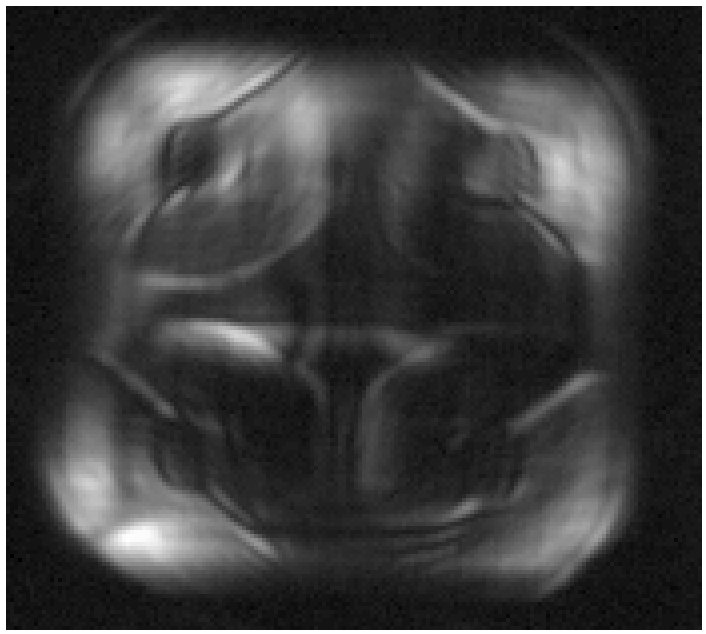 |
Figure 4: Reference Pyramid WFS image acquired on SCExAO internal source.
|
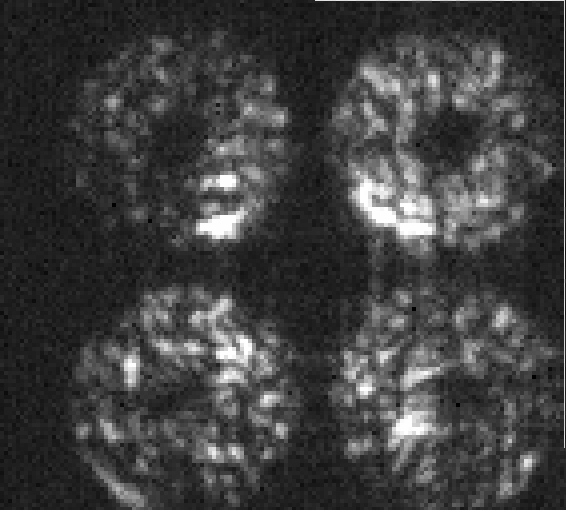 |
Figure 5: On-sky pyramid WFS data (2000 frames, acquired at about 1 kHz).
|
3.4. EMCCD data
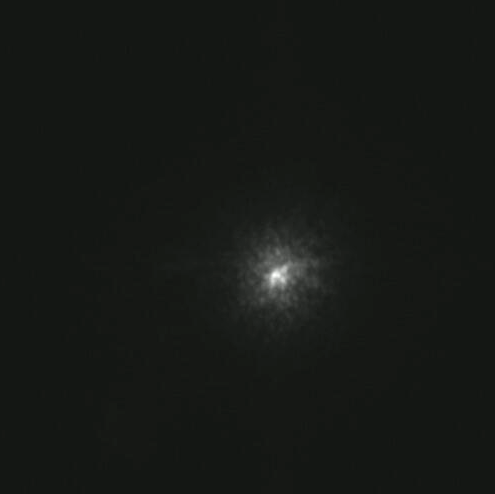 |
Figure 6: On-sky EMCCD sequence (acquired at 35Hz).
|
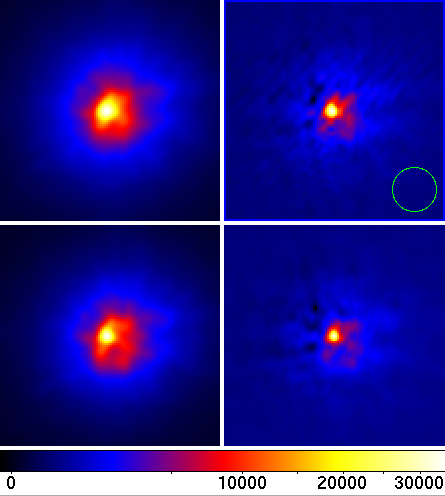 |
Figure 7: Images of Mira obtained by data reduction of the EMCCD data. Top: 656 nm, Bottom: 680 nm. Left: Select, shift and add (Lucky imaging). Right: Knox-Thomson type algorithm. Images are 1" x 1". The small green circle is 0.1" radius.
|
4. Hardware images, installation
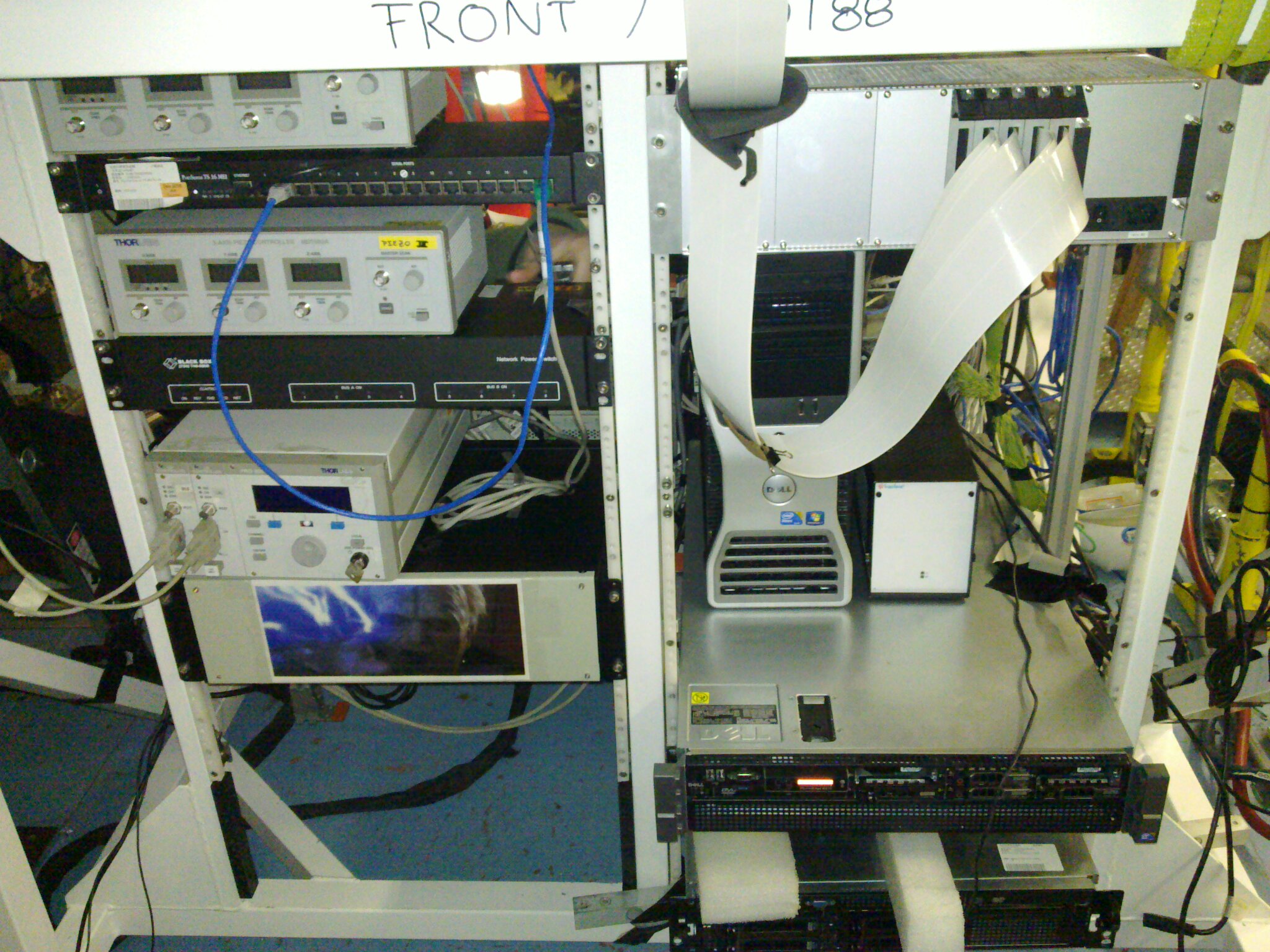 |
Figure 4-1: Electronics configuration
|
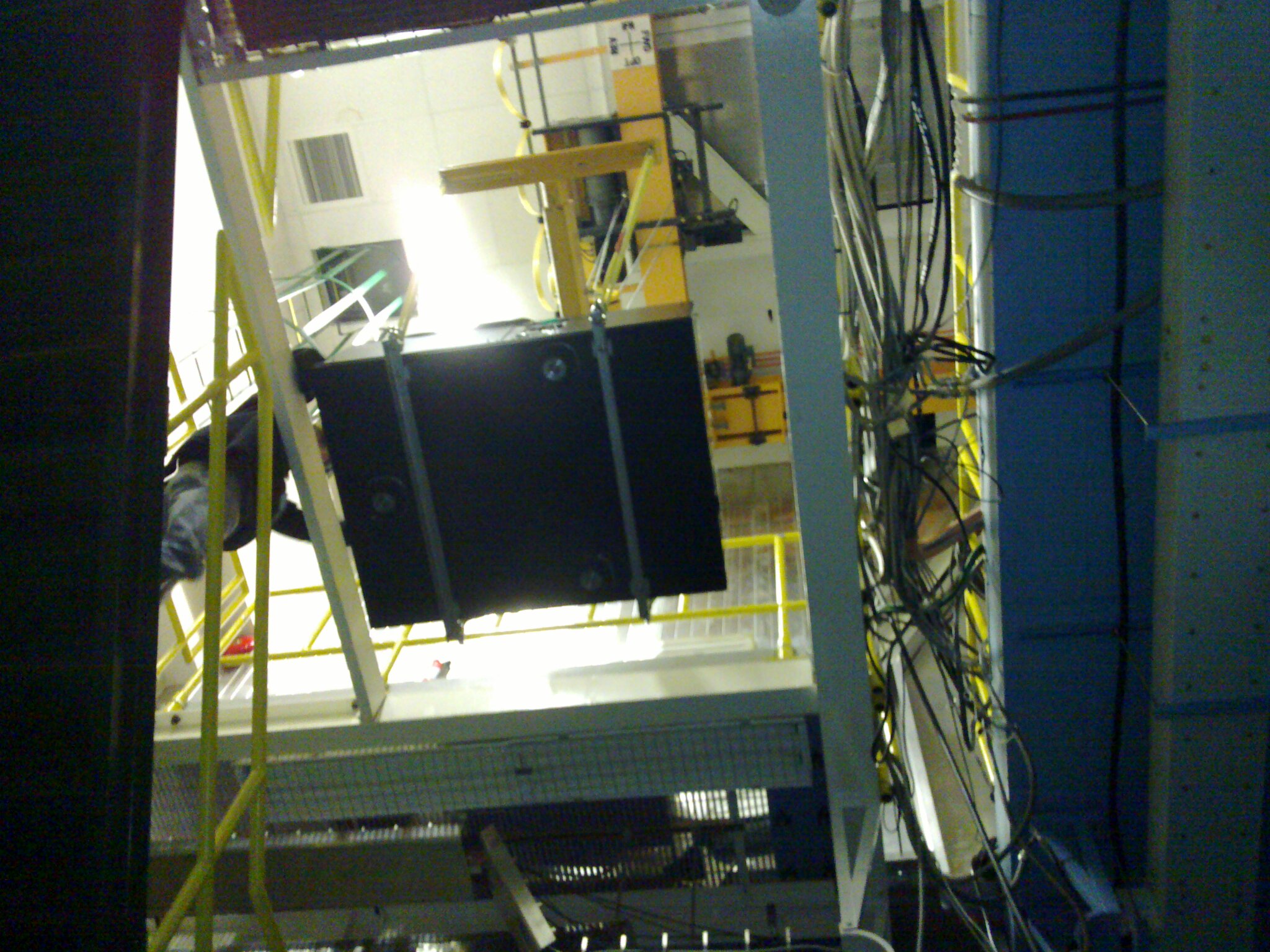 |
Figure 4-2: Craning SCExAO
|
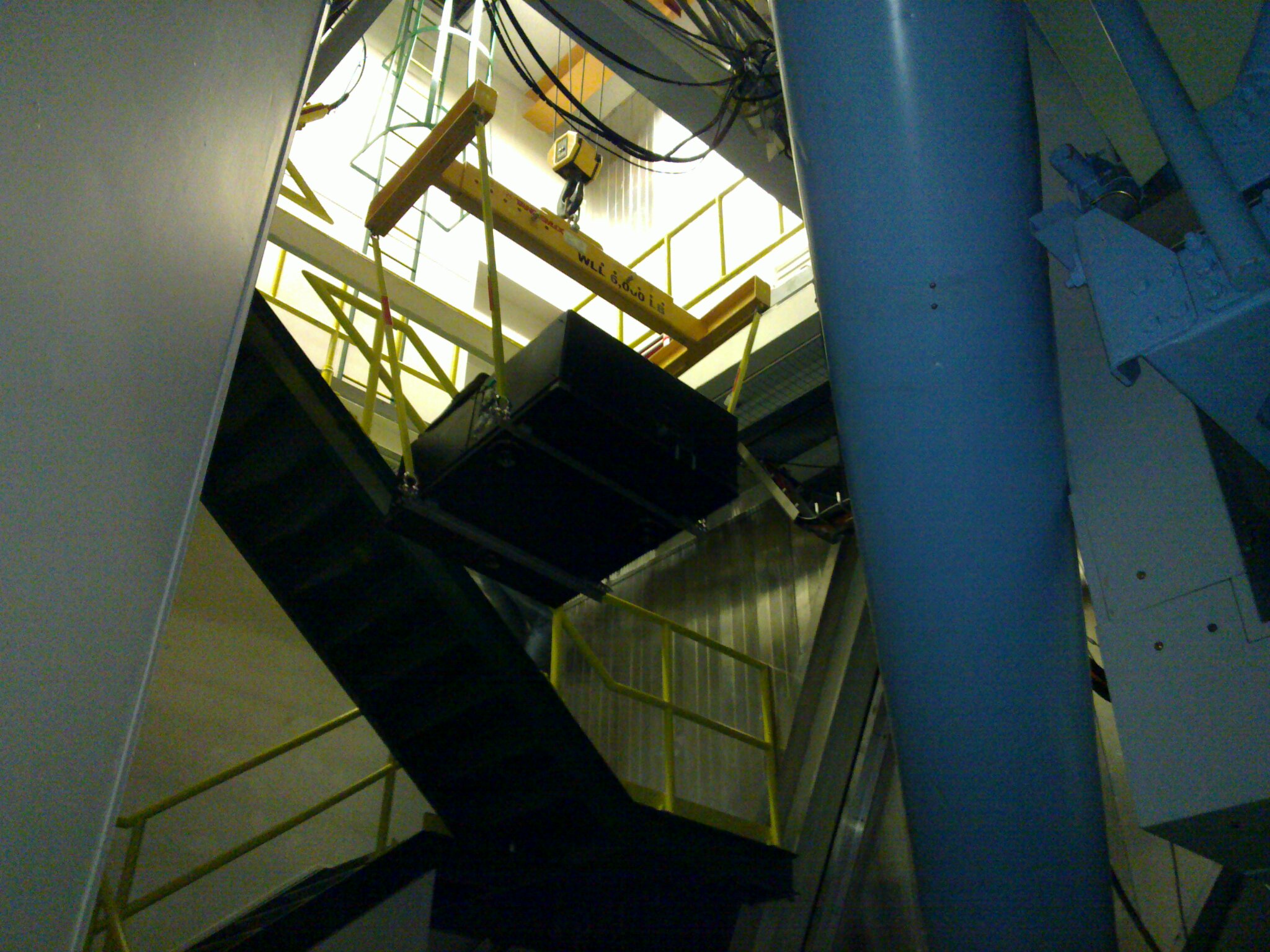 |
Figure 4-3: Craning SCExAO
|
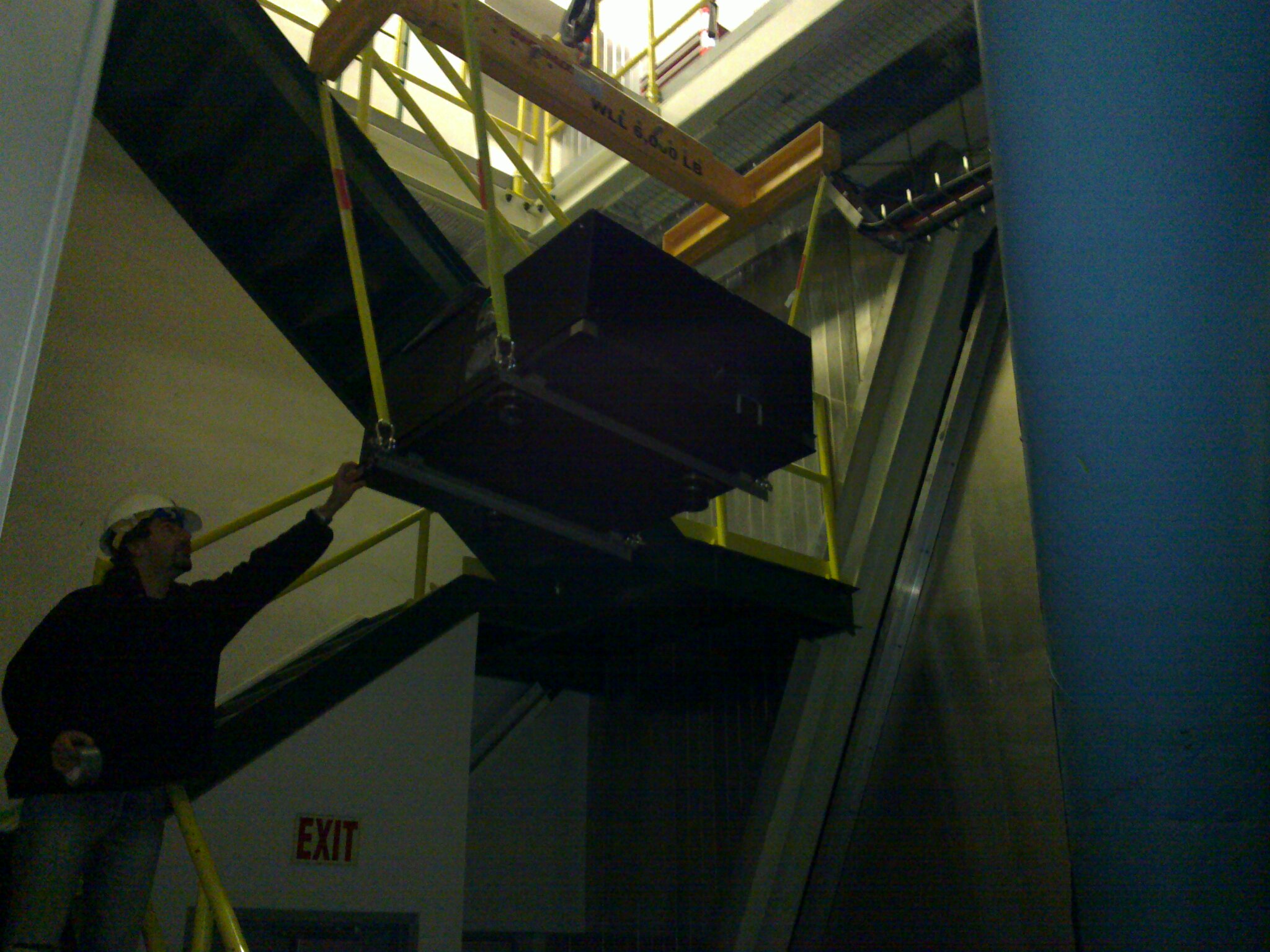 |
Figure 4-4: Craning SCExAO
|










